Ever since I was a little girl, I’ve been fascinated by fictional representations of the bayou. Whether it’s my teenage obsession with The CW’s Vampire Diaries spinoff The Originals or my interest in the occult, to me, the swamp represents nature at its most powerful; if magic exists, the bayou would be its beating heart. South of Midnight, then, is outwardly perfect for me; a feeling compounded by the fact it hails from Compulsion Games, the creator of We Happy Few, one of my personal favorites. I’ve gone to bat over it many times, and while I acknowledge that it’s janky and very much not what we expected it to be, it remains a unique, mind-bending acid trip that I often return to. Despite their very different settings and genres, South of Midnight may end up being just as divisive, but its living world, strong characterization, and heart-wrenching story could still make up for its jank and familiar action.
A storm is coming. Our protagonist, Hazel, and her mother, Lacey, are no strangers to a hurricane, but something is different this time around. The tempest rages, the walls shake, the ground subsides. Lacey and Hazel’s home is washed into the river, with Lacey in tow. That’s the sum of my knowledge coming into my hands-on preview of South of Midnight, which drops me straight into Chapter 3 of Hazel’s tale.
My journey begins with a gorgeous stop-motion cutscene, reacquainting me with Compulsion’s puppet-like, Tim Burton-esque style. There’s dark shading, sharp angles, and an aura of dread. As I drop into the bayou, that sense of unease chews at my soul. Within minutes I’m pitted against a swarm of Haint; eerie, insect-like creatures corrupted by inky, black tendrils of malevolent magic. Thankfully, they’re relatively easy to dispatch, but as the action draws to a close, I notice something that leaves me perplexed and a little unwell.
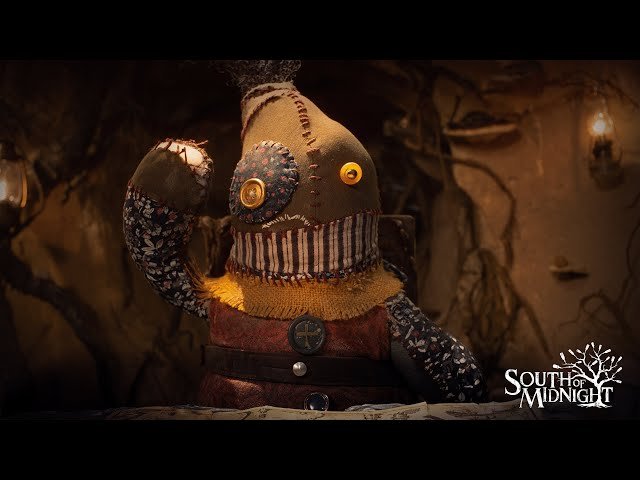
A closer look at Hazel reveals that her entire body perceptibly moves frame by frame, comparable to the animation in the recent Spider-Verse movies. As I follow along behind the specter of Mahalia (the powerful Weaver guiding Hazel through the storm), I notice the same visual effect in every enemy and NPC I encounter.
This isn’t a bug; it’s an aesthetic choice, and while the idea of having the characters mimic jerky, inhuman stop-motion movements is great on paper, I quickly find myself feeling nauseous during fast-paced combat sequences. I eventually close out my South of Midnight hands-on with two aspirin tablets and a whole lot of water.
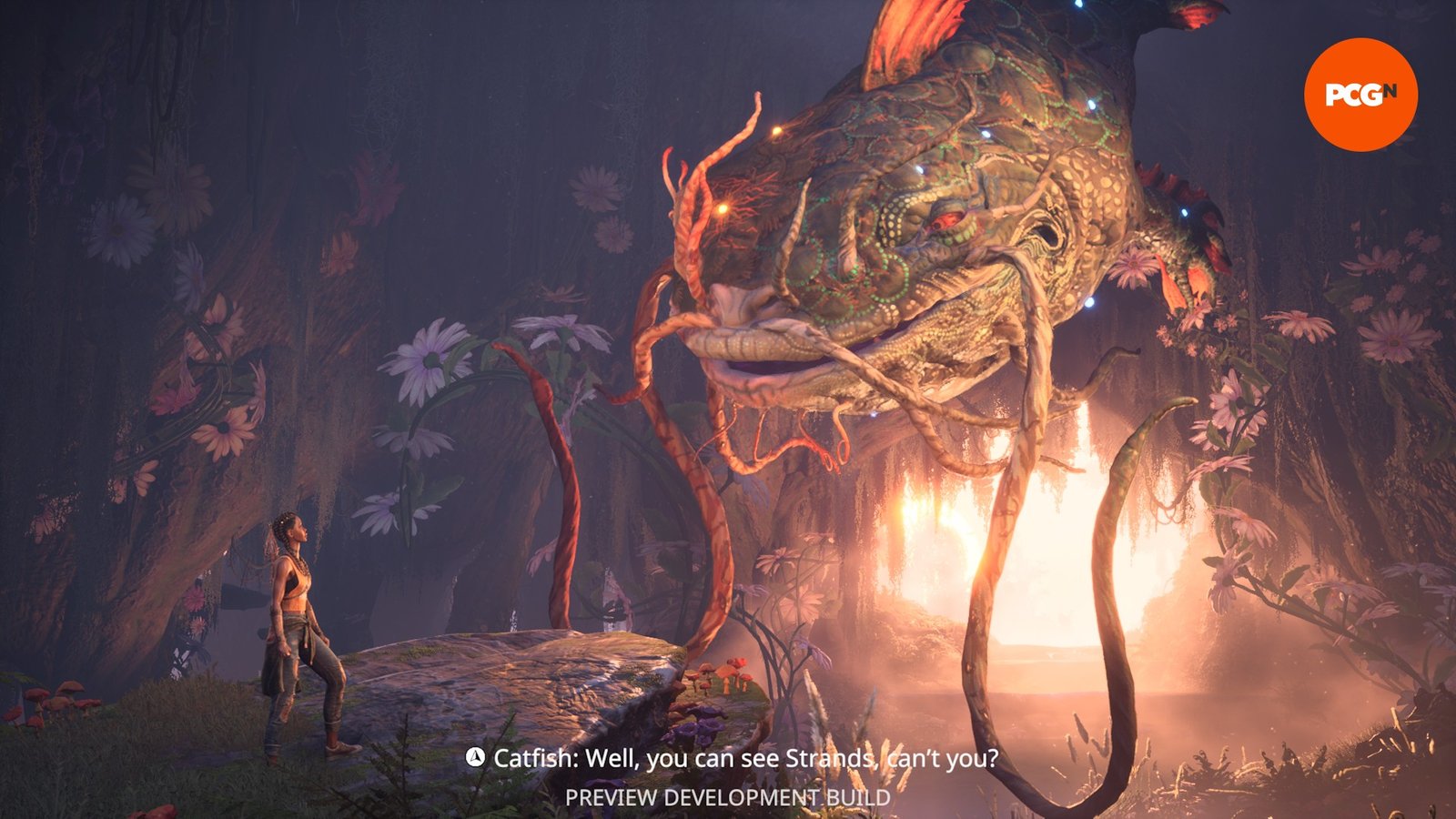
And it’s a shame because combat is fun, if a bit familiar. You can use your newfound powers to get up close and personal or take down enemies from afar with charged attacks. Hazel is highly mobile, meaning she can dart around the battlefield with ease. You can perfectly parry certain attacks, transforming eerie knots of lethal red energy into brilliant blue ranged counters that deal considerable damage.
While South of Midnight is hardly a soulslike, it does punish you for spamming attacks. After hitting enemies a few times, they’ll start to glow a sickly yellow-orange, warning you to dodge backward. It changes up the flow of combat, forcing you to think and adapt on your feet. As your enemies fall, you can then unravel them, dispelling them for good and earning yourself some much-coveted HP. It’s not anything we haven’t seen before, but it’s executed well enough.
As encounters come to a close and Hazel untangles the knots of corruption, the bulbous, flesh-like sacks of fluid that surround the arena are stripped away, replaced by an abundance of colorful flowers and vibrant insects. It’s reminiscent of games like The Saboteur; you feel like you’re actually saving the world, which I love.
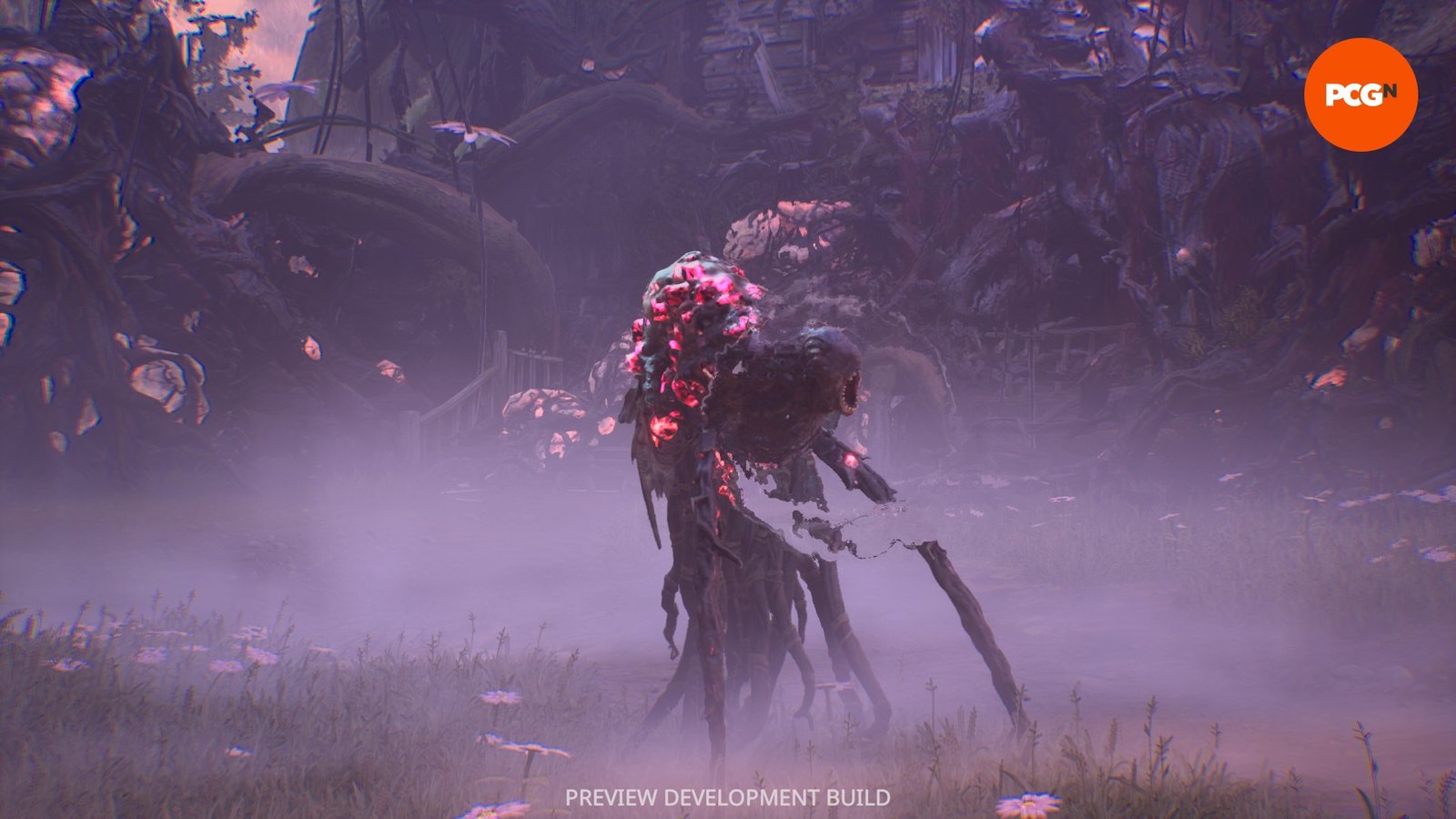
And South of Midnight’s world is very much worth saving. Amid the muddy greens and browns of swampy lakes and well-trodden patches of grass are flickers of life – both human and animal. I squeal as an adorable, angular possum appears on my screen, and find myself actively reading notes and – less enthusiastically – eviction notices scattered in abandoned houses and posted on cabin doors. My encounter with Catfish, South of Midnight’s resident storyteller, leaves me with a huge smile on my face; the authenticity of his drawl contrasts starkly with Hazel’s noughties vibe to create a distinct universe.
As you explore the bayou looking for a bottle tree (a Southern tradition to ward off evil spirits) in the hopes of freeing Catfish, you run into Rhubarb, a particularly perturbed gentleman who accuses you of being a Boo Hag, a legendary creature from Gullah culture. When proven wrong, he eventually parts with a bottle and leaves me be, but I hear him asking himself ‘how that ol’ song used to go.’ Initially, I wrote it off as random dialogue, but as I quickly find out, everything has its own meaning in South of Midnight.
It’s worth noting that there are no real puzzles here. Finding Rhubarb and his tree is merely a matter of exploration. The platforming is relatively straightforward, and while the wall-run mechanics and gliding look gorgeous, they’re standard fare. There isn’t much of a challenge here in the early stages, but that’ll hopefully change as you progress.
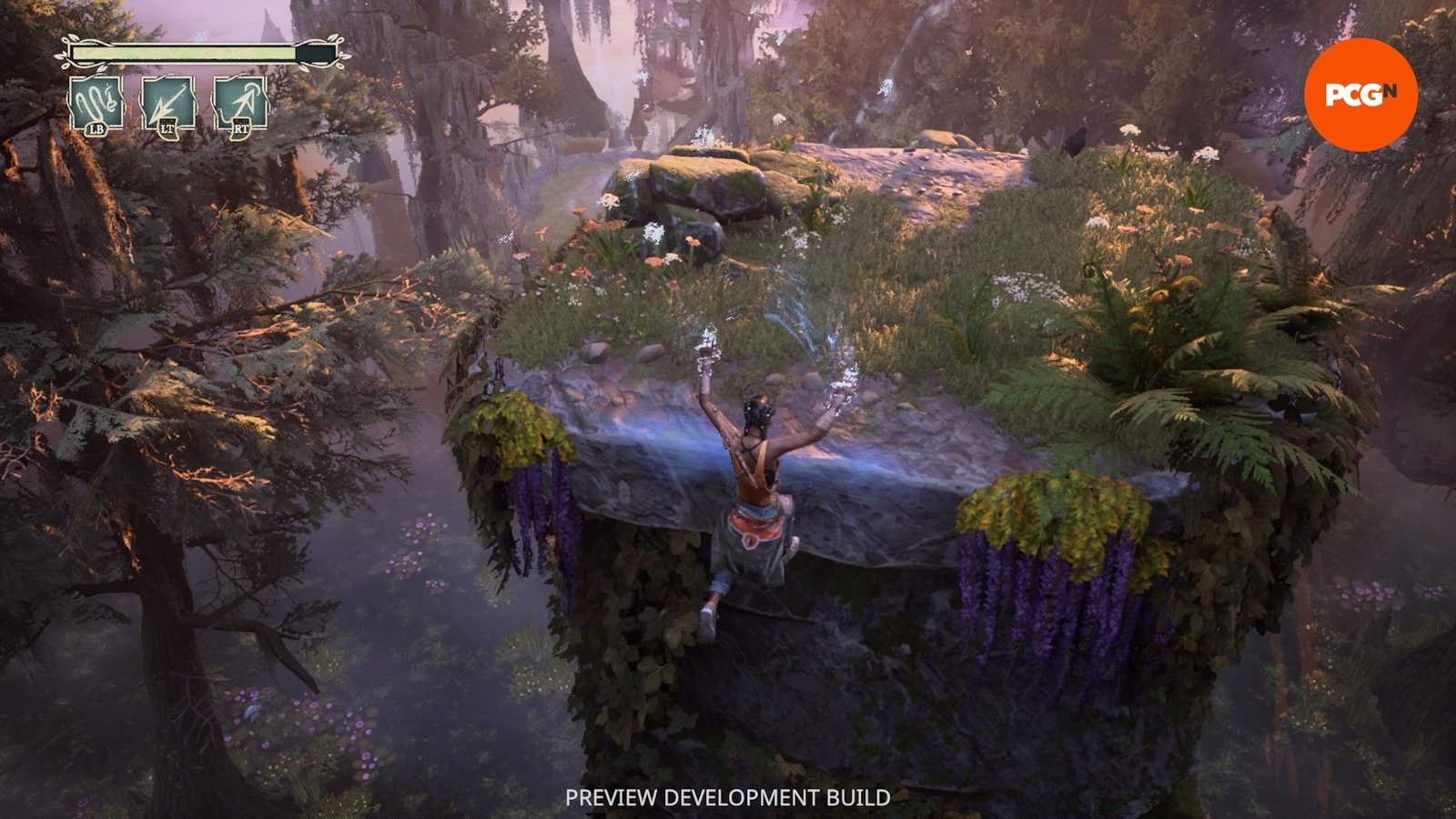
As I continue on, Catfish tells me that this evil, bayou-eating energy is born of negative emotion that I can scoop up in a bottle and ‘purify.’ I realize the trauma belongs to Rhubarb’s younger brother, Benjy, who Catfish tells me “saw the world in a different way.” As Benjy’s primary carer, we see Rhubarb stifle his own ambitions to safeguard his brother, but, as you’ve likely guessed, resentment quickly begins to boil under the surface. Rhubarb takes Benjy out to an old tree to ‘play,’ but instead barricades him in there and leaves him to die. Said tree is the one currently restraining Catfish and is, indeed, Benjy, whose soul has fused with gnarled wood and twisted branches to form a towering creature.
Memories collected and emotions in tatters, I begin to scale Benjy, bottle in tow. Then a jaunty little tune starts to play. The toe-tapping ballad weaves the brothers’ saga of strife into a gentle melody that soundtracks my climb, with the singer – Rhubarb – noting that his hammer signed his sentence to hell. Remember Rhubarb’s line about not being able to recall a tune? Turns out this is the song. I’m not crying, you are. As I free Benjy’s spirit from the tree, the music tapers off, leaving me sad, happy, and elated all at once.
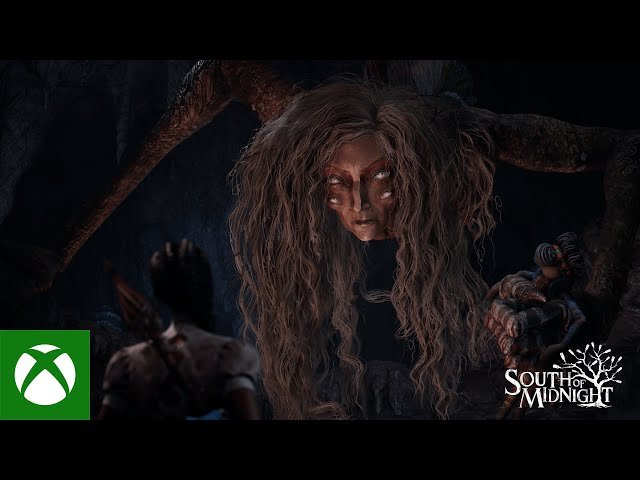
I respect and enjoy Compulsion Games’ vision of the American South. It feels every bit as unique as We Happy Few’s trippy dystopian ‘60s London. While its mechanics aren’t anything we haven’t seen before, its setting is truly special.
Of course, I only played a single, narrative-heavy mission from the first half of what appears to be a fairly lengthy game. I’ve got no doubt that the combat difficulty will ramp up over time, but I also hope to see more involved exploration. As is, South of Midnight’s unique setting and strong characterization are left to do some heavy lifting, but it’s still special enough to be worth defending, just like We Happy Few before it.





